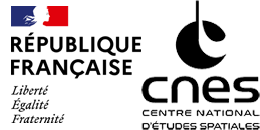The year 2018 was exceptional for asteroids exploration with two sample return missions reaching their target: in July 2018, Hayabusa2 (JAXA) reached the asteroid Ryugu. Hayabusa2 released three JAXA technological demonstrators and MASCOT, a lander developed and operated by CNES/DLR. The spacecraft also collected surface material twice and performed a crater-creating experiment… OSIRIS-REX arrived at asteroid Bennu in December 2018 and it should soon start retrieving samples of material. Years to come are also very promising with new missions in preparation like the Hera mission (ESA), which should explore Dydimos, a binary asteroid; another example is the M-ARGO mission (ESA), which could become the first nanosatellite to rendez-vous with an asteroid.
All abovementioned missions explore Near Earth Asteroids (NEA). Apart from their scientific interest, NEAs are now very attractive for space agencies and even for the private sector like mining companies: they feature orbits close to Earth’s orbit (aphelion < 1.3AU) combined with a weak gravity. NEA missions can then be performed with a relatively low ΔV budget compared to conventional interplanetary missions. On the other hand, the asteroid physical characteristics (shape, masse, spin state) are usually almost unknown before the space probe reaches its target; this ignorance must be taken into account in the design of the mission.
During this seminar, several actors of these missions will share their work and experience. The presented topics, in relation with flight dynamics, will cover the various aspects of asteroid missions, ranging from theoretical work to operations through mission analysis.
----------------------------------------------------------------------------------------------------------------
PROGRAM:
09:45 - “The exploration of asteroids: a review of current results from the two fascinating missions Hayabusa2 and OSIRIS-REx and future projects in Europe (Hera) and elsewhere”
P. Michel, Université Côte d’Azur /CNRS/Laboratoire Lagrange, Observatoire de la Côte d'Azur
10:30 - “The CNES Flight Dynamics contribution to the exploration of the asteroid Ryugu by MASCOT”
L. LORDA, CNES
11:30 - “Flight Result of Hayabusa2 Operation for MASCOT Release”
Y. Mimasu, Japan Aerospace Exploration Agency (JAXA), Institute of Space and Astronautical Science (ISAS)
12:00 - “Numerical simulations of asteroid surface interactions: application to MASCOT lander and Hayabusa2 sampling mechanism”
F. Thuillet, Université Côte d’Azur /CNRS/Laboratoire Lagrange, Observatoire de la Côte d'Azur
12:30 - “The envelope of reachable asteroids by an interplanetary CubeSat: The case of M-ARGO”
F. Topputo, Y. Wang, C. Giordano, V. Franzese, Politecnico di Milano
14:30 - "HERA: The observation part of the AIDA mission to binary asteroid 65803/Didymos"
M. Khan, ESA/ ESOC
15:00 - "The technological challenges of the celestial small bodies: @PoliMi on going activities"
M. Lavagna, POLIMI
15:30 - "Current Research at ISAE-SUPAERO on Small Body Characterization and Autonomous Navigation Through Imagery"
P. Panicucci, ISAE-SUPAERO
16:00 - "Quasi Satellite Orbits for the exploration of Phobos"
E. Canalias, CNES
----------------------------------------------------------------------------------------------------------------
ABSTRACTS and SUBSCRIPTION: click above on "S'INSCRIRE" !
----------------------------------------------------------------------------------------------------------------
WHERE? CNES Poincare 47




